Archives
The Ashoka Chakra
The ‘Ashoka Chakra’ can also be seen on the base of the Lion Capital of Ashoka which has been adopted as the National Emblem of India. The ‘Chakra’ signifies that there is life in ‘Movement’ and death in stagnation. The wheel represents the cycle or the self repeating process with the changing of time in life. The horse on the Right hand symbolises accuracy and speed. The Bull on the Left hand stands for hard work.
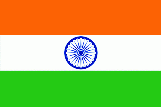 The Wonderful Qualities of Twenty Four Spokes:
The Wonderful Qualities of Twenty Four Spokes:
1. Love
2. Courage
3. Patience
4. Peacefulness
5. Magnanimity
6. Goodness
7. Faithfulness
8. Gentleness
9. Selflessness
10. Self-Control
11. Self Sacrifice
12. Truthfulness
13. Righteousness
14. Justice
15. Mercy
16. Gracefulness
17. Humility
18. Empathy
19. Sympathy
20.Spiritual Knowledge
21. Moral Values
22. Spiritual Wisdom
23. The Fear of God
24. Faith or Belief or Hope
The Indian National Flag
The Glorious history of the Indian Flag goes back to the year 1906, when it kissed the pious and sacred soil of India. The message was in the air and it was loud and clear for the British ‘the souls of millions have finally risen up from their profound slumber and it is now the British Government’s turn to sleep on their plan of ruling India any further’.
The oldest and the first version of the NationalFlag was christened the ‘Saptarishi Flag’ and was hoisted in 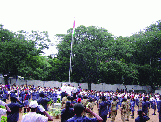 Stuttgart at the International Socialist Congress. The year 1921 witnessed the emergence of the next National Flag which was later redesigned after the suggestion of Mahatma Gandhi and had a new look to flaunt. It now contained a white strip and the ‘charkha’. Unfortunately it graced the Indian freedom struggle with its presence for a very short duration of time as it was not considered pertinent enough by the All India Congress Committee session in 1931.
Stuttgart at the International Socialist Congress. The year 1921 witnessed the emergence of the next National Flag which was later redesigned after the suggestion of Mahatma Gandhi and had a new look to flaunt. It now contained a white strip and the ‘charkha’. Unfortunately it graced the Indian freedom struggle with its presence for a very short duration of time as it was not considered pertinent enough by the All India Congress Committee session in 1931.
The story didn’t end at this point as, on August 6, 1931, the Indian National Congress formally gave it’s nod of approval and the Flag came into existence which was first hoisted on August 31st. However, it was compelled to step down and was taken over by it’s younger sibling which happens to be our current National Flag. So, after a great deal of transformation, the final National Flag breathed it’s first on July 22, 1947 on the cradle of India and mouthed it’s first words of freedom on 15th August. The man who showed the world the colorful power of three was Lt .Shri Pingali Venkayya. He painted India with the vibrant colors of saffron, white and dark green on the canvas of courage, sacrifice, patriotism, and renunciation.
The man who showed the world the colorful power of three was Lt .Shri Pingali Venkayya. He painted India with the vibrant colors of saffron, white and dark green on the canvas of courage, sacrifice, patriotism, and renunciation.
The Color Check
The Flag’s saffron color symbolizes courage and sacrifice, green stands for faith and fecundity, the white in the center depicts the inscribed mélange of unity, truth and peace. Lastly, blue represents the color of the sky and the ocean.
The Flag struts its stuff with the historical gem called the ‘Ashoka Chakra’ (or ‘Wheel of Law’). The ‘Chakra’ connotes the incessant growth of the nation and the virtue of justice in life. It is also seen on the Sarnath Lion Capital of Ashoka
Independence Day Trivia
India woke up to freedom on this day, way back in 1947, after a struggle which spanned centuries. The British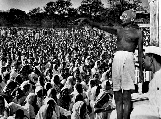 handed the rule of the country to the Indian leaders at the stroke of midnight.
handed the rule of the country to the Indian leaders at the stroke of midnight.
India’s Independence is celebrated on this day by hoisting the tri-coloured flag in the state capitals, and holding cultural programmes.
Though schools and colleges may not have a holiday on this day, no academic work is done. Students and teachers gather for a flag hoisting ceremony and they sing the National Anthem. The rest of the country, however, usually enjoys a holiday on this day.
It is a time when we must sit back and remember the freedom strugglers, without whom we may never have got our freedom.
Rani Laxmi Bai, the Queen of Jhansi, led her people into a battle against the British in which she fought like a tiger, and was killed heroically.
Mahatma Gandhi, the father of the nation, led the country to freedom with his non-violent ideals. He remains a symbol of peace to this day. 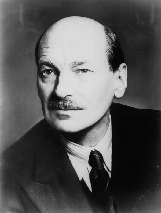 Sardar Vallabhai Patel was responsible for uniting the princely states into one country.
Sardar Vallabhai Patel was responsible for uniting the princely states into one country.
Bal Gangadhar Tilak is remembered for his court statement in which he proclaimed ‘Swaraj is my birthright, and I will have it!’
Bhagat Singh who threw a bomb when the Legislature was in session, and was arrested and hung.
Maulana Abul Kalam Azad who was elected President of the Congress when he was just 35.
Dr. Annie Besant, a Britisher who supported India’s freedom struggle wholeheartedly and founded the Home Rule league in India.
Ashfaqualla Khan, a revolutionary who was given the death sentence and kissed the noose before it went around his neck.
In early 1947 British Prime Minster Clement Atlee announced that Britain would leave India no later than June 1948. The decision came after years of dissatisfaction and non-violent resistance, termed ‘satyagraha’ by Mahatma Gandhi.
Newly appointed viceroy, Lord Louis Mountbatten, oversaw the birth of the modern states of India and .gif) Pakistan. They came into being at midnight on August 15 1947, as astrologers could not decide on an auspicious date. Mountbatten attended one transfer of power ceremony in Karachi on the morning of the 14th, and another at 11 pm in Delhi. Pakistan’s Independence Day is August 14, India’s is August 15.
Pakistan. They came into being at midnight on August 15 1947, as astrologers could not decide on an auspicious date. Mountbatten attended one transfer of power ceremony in Karachi on the morning of the 14th, and another at 11 pm in Delhi. Pakistan’s Independence Day is August 14, India’s is August 15.
The border was drawn by a London lawyer Sir Cyril Radcliffe. Appointed head of the Boundary Commission on June 3 1947, he submitted his partition map on August 13. The Radcliffe Award split Pakistan into two separate areas, East Pakistan (today’s Bangladesh,) and West Pakistan, with India in between.
Millions found themselves on the ‘wrong side’ of the border after August 1947’s Indian Independence Act. An estimated 14.5 million people crossed the border in the months immediately after partition. Hundreds of thousands were killed in resulting clashes. 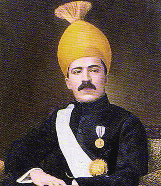 The ruler of the autonomous Jammu and Kashmir princely state had not decided which side to join by August 1947. Pakistan, still believes the state should have become part of Pakistan, because the majority of its population is Muslim. However, the Hindu Maharaja finally agreed to join India in October 1947.
The ruler of the autonomous Jammu and Kashmir princely state had not decided which side to join by August 1947. Pakistan, still believes the state should have become part of Pakistan, because the majority of its population is Muslim. However, the Hindu Maharaja finally agreed to join India in October 1947.
Some of the more prominent freedom movements were:
The Mutiny of 1857
This mutiny was the turning point of the freedom movement though it was suppressed by the British. It was the first organized freedom struggle on such a large scale and paved the way for further struggles for freedom.
The Civil Disobedience Movement of 1929
It was decided to celebrate Indian Independence Day on the 26th of January. On this day the freedom 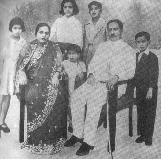 fighters, spearheaded by Mahatma Gandhi, hoisted India’s National Flag. It was decided to completely disregard the orders of the British Government.
fighters, spearheaded by Mahatma Gandhi, hoisted India’s National Flag. It was decided to completely disregard the orders of the British Government.
The Dandi March of 1930
Gandhi led a 241-kilometer march to Dandi at the age of 61 and proceeded to make salt in defiance of the law by non-violent means. The British had to arrest millions to enforce the law, causing panic in the administration. This march, in fact, was the first strategy of the Civil Disobedience Movement.
The Quit India Movement of 1942 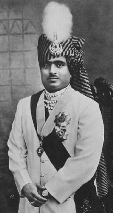 The year 1942 is now identified more with the movie 1942: A Love Story, than it is with the Quit India Movement! This movement called for a widespread, non-violent struggle for India’s freedom. Before long there were revolts all over the country, demanding that the British ‘quit India’.
The year 1942 is now identified more with the movie 1942: A Love Story, than it is with the Quit India Movement! This movement called for a widespread, non-violent struggle for India’s freedom. Before long there were revolts all over the country, demanding that the British ‘quit India’.
Do you know:
National Anthem - Jana Gana Mana
National Animal - The Tiger
National Bird - The Peacock
National Flower - The Lotus
Indian Independence -
A Twist in the Tale
As history moves, a lot of insightfully delightful trivia of history gets buried under a simplified black and white version of the historical experience.
The popularity of the simplified version is because it is uncomplicated and clearly distinguishes the ‘good’ from the ‘bad’ - and therefore, is very convenient for the MSM and the 0/1-binary thinkers.
History, on the other hand, is primarily amoral, and has a tendency of punching holes in the contemporary zeitgeist...
While we often say that India got its independence from the British on August 15, 1947, actually, the British never ever ruled the entire India as we know it now - at least not technically.
There was one part which was the British India (Direct Rule), and there was the other part consisting of 562 Princely States, covering roughly 40% of the land-mass of what we now call India (Indirect Rule). About 100+ of these Princely States were quite large, e.g., Travancore, Hyderabad, Baroda, Mysore, Kashmir, etc., while many were small “jagirdaris”...
While British India was governed by the British Parliament, there were separate political arrangements with the princes, and these came under something somebody called “Chancellor of Indian Princes”.
In early 1947, when England decided to free India, the British Parliament passed the Indian Independence Act (in June 1947, which marked the foundation of two separate nations - India and Pakistan).
However, this Act did not apply to the Princely States. The freedom to these states was given by a separate Cabinet Memorandum, which declared that the British Government will cease to have any political or defense arrangements (“Power of Paramountcy”) with the Princely States. The memorandum was clear that the Princely States were free to decide to either join India or Pakistan before August 1947 - or devise their own sovereign political system for self-governance.
Most of the Princely States were small and decided to join either India or Pakistan before independence (in return for a promise that the government will maintain their Princely perquisites, which finally got abolished in 1970-71).
There were, however, three exceptions:
Hyderabad (which had a population of around 1.4cr, with a Muslim Nizam Fath Jang Nawab Mir Osman Ali Khan Asaf Jah VII and around 80% Hindu population). The Nizam of Hyderabad either wanted to remain sovereign (and become a part of the British Commonwealth), or join Pakistan (which would have made an interesting map of Pakistan;)... Anyway, the state was annexed by India.
Kashmir (with a Hindu Maharaja and a Muslim majority in the population, and, to make thing more complicated, an adjoining border with Pakistan) There is confusion about whether the Maharaja of Kashmir, Hari Singh ever signed the letter of accession with India or not - he had not done that till India and Pakistan became independent in August 1947. Some records say that he wanted to be a part of India, but by then the situation had gone out of hand, and the Indian army landed to curb the infiltration... etc. etc... but that remains a murky, messy situation... Even till date!
And then there was Junagadh which was a very interesting case:
Colonel H.H. Shri Diwan Nawab Sir Muhammad Mahabat Khanji III Rasul Khanji the Nawab of Junagadh was a Muslim and Junagadh had a large Hindu population. Geographically, it was a peculiar piece of the jigsaw in what was to become the two nations of India and Pakistan. It was a state in erswhile Saurashtra, surrounded by the Hindu Kathiawad regions (which had acceded to India) on three sides, and facing the Arabian Sea on the fourth.
The Nawab, however, decided to join Pakistan, which predictably did not go very well with the local populace, and they revolted. The neighbouring states also added to the pressure by imposing a blockade (‘chakka jam’) against any grains, vegetables, or material en route to Junagadh.
As the revolt grew, the Nawab fled to Pakistan along with his family, taking almost all the state treasury with him and leaving his Deewan (Prime Minister) to manage the affairs.
The Deewan of Junagadh did the best that he could have done to bring the situation to normalcy but it continued to worsen. The newly formed Pakistan was still dealing with its own issues and could therefore not extend help to a distant Junagadh... and finally the Deewan wrote to Jinnah stating that since Pakistan was not able to help Junagadh, and have the situation was worsening, he would be handing over Junagadh to the Indian Government - which he did around October 1947, through a letter to the Regional Commissioner of Saurashtra, Mr Buch.
A few months later a plebiscite was held in which more than 190,000 voted to be a part of India, while only 91 favoured to be a part of Pakistan (Pakistan contested the results, and the Indian government upheld it... as one would have anticipated).
But here is the somewhat poetic twist to the story:
The Deewan of Junagadh was a person called Sir Shah Nawaz Bhutto. His son, Zulfikar Ali Bhutto, grew up to be the Prime Minister of Pakistan (was executed by Zia-hl-Haq in 1977)... and his granddaughter, Benazir Bhutto served as the Prime Minister of Pakistan twice in the late 80s and the 90s.

